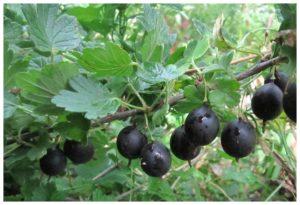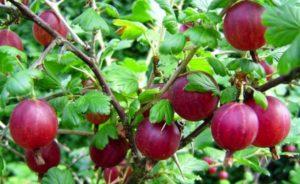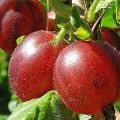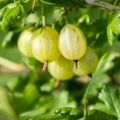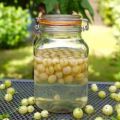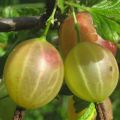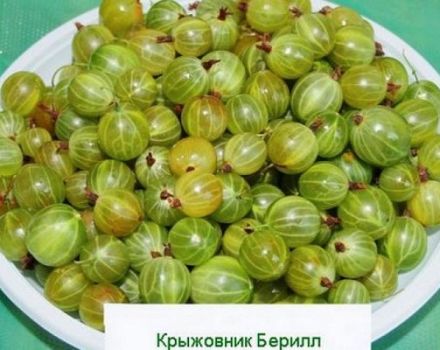How you can grow gooseberries from seeds at home
Almost every owner of a garden plot is engaged in growing gooseberries. And there are reasons for this, in particular, the berry is distinguished by useful properties, has excellent taste, and is also characterized by early maturity and high yield. However, in order to obtain a healthy plant, efforts must be made from the moment of planting. Next, we will tell you how to properly grow gooseberries from seeds.
Can gooseberries be grown from seeds?
Those who wish to grow gooseberries from seeds at home should be aware that there are cases when the "baby" does not have all the varietal characteristics of the mother plant.
The loss of certain properties of the mother plant in a plant is due to the fact that it has the ability to cross-pollinate. As a result, the process of transferring pollen from a plant of one variety to a plant of another leads to the fact that the seedlings receive new characteristics, which are not always positive.
In addition, most varieties are now hybrids, which in the process of selection received both their characteristic features and parental ones. These seedlings may develop characteristics of parent crops over time.
Best suited varieties
Breeders are trying to ensure that the taste of gooseberries improves qualitatively, and the bush itself is not so prickly, as this makes harvesting difficult.
If we talk about the most common gooseberry varieties, it is worth highlighting the following:
- Russian variety - refers to early maturing and is distinguished by high growth. Produces a good harvest. The berries are oval and dark red in color. Weight is approximately 4 grams. One bush gives up to 6 kilograms of fruit.
- Malachite is a medium-ripening variety. The shoots are also tall. From one bush, 6 to 7 kilograms of berries are harvested. The gooseberry has a round berry and is green in color. This variety tastes sweet, but there is a slight sourness, which does not spoil the overall impression of the berry.
- Date - this variety belongs to the late maturing. The bush grows tall and bears fruit well. So, from an adult plant, you can collect up to 12 kilograms of berries, and the weight of one berry will fluctuate around 20 grams. The taste of this variety is sweet and sour.
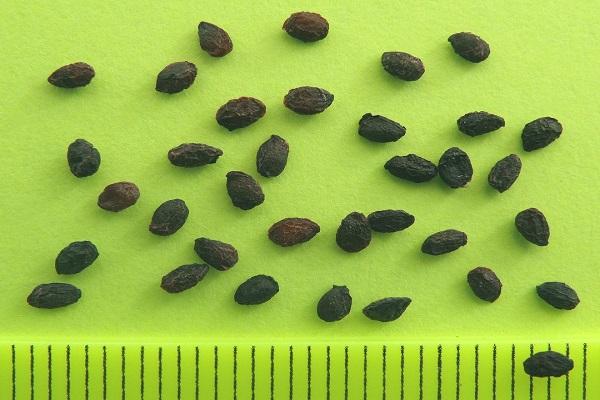
Basic principles of cultivation
To grow gooseberries from seeds, you must adhere to certain rules of agricultural technology.Further we propose to dwell on each of them in detail.
Seed preparation
Ripe berries are collected, seeds are taken out of them, which are thoroughly rinsed in warm water so that no pulp remains. Next, the seeds are laid out on a clean, dry cloth to dry out.
Selecting and preparing a landing site
For sowing, containers are prepared, on the bottom of which a drainage layer of pebbles or expanded clay is laid. As for the soil substrate, for planting gooseberries, it is prepared from fertile soil, river sand and organic matter (manure).

Sowing seeds
Seeds must be spread on the soil surface after about 5 centimeters from each other. It is worth deepening them slightly, sprinkle with the remains of the earth on top of about half a centimeter
Containers with soil are watered and covered with foil on top. Gooseberries are kept at a temperature of + 3- + 5 degrees.
The following spring, the pots are placed in the ground in a garden plot. This should be done only when the seedlings have two leaves.
Further care for the gooseberry
Planting is not all that is needed to get a crop. So, further care for the gooseberry should also be correct, which you will learn about later.
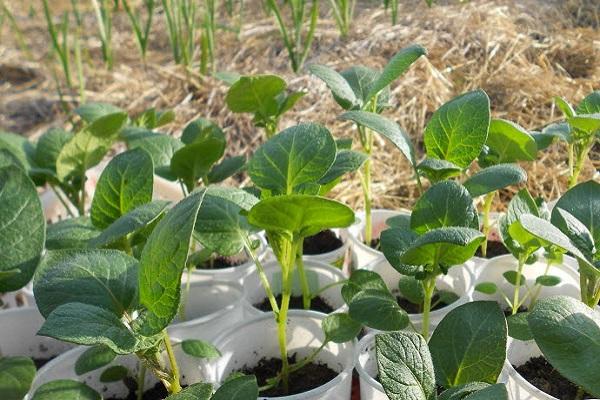
Tillage
For the stable development of gooseberries, as well as for the culture to bear fruit, it is worth systematically digging or loosening the soil. As for the depth and strength of the tillage, it depends solely on the soil structure. So, dense soil requires digging with a shovel, and loose soil is enough to "fluff" using a garden pitchfork.
The roots of the bush are close to the soil surface, so the processing that is carried out next to the crown should be carried out as carefully as possible. At the moment of loosening, it is permissible to touch only the top layer of the soil, without deepening more than 7 centimeters. As for the perimeter around the bush, you can work the land more confidently.
No less important is the timely destruction of weeds, which provoke high humidity at the bottom of the bush, and these are suitable conditions for the occurrence of various diseases.
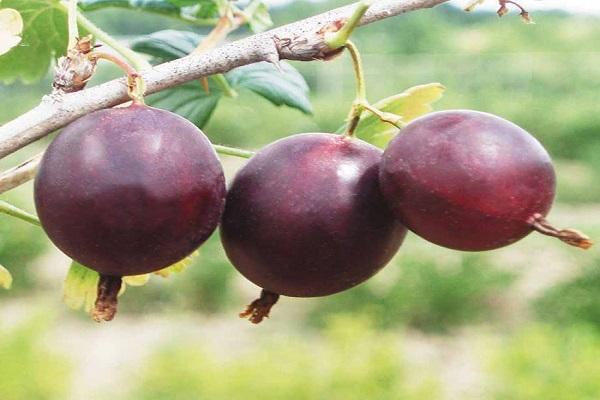
Top dressing and watering
Gooseberries bear fruit for many years, taking a large amount of nutrients from the soil, so the annual application of a variety of fertilizers is a necessary measure. In the spring, each bush needs half a bucket of compost, 50 grams of superphosphate, 25 grams of ammonium sulfate, and potassium sulfate. In the event that the bushes are large and give a good harvest, the rate is doubled.
Fertilizers must be applied around the perimeter, namely in those places where the roots of the plant are located; after these places are abandoned, the soil is loosened. The first time fertilization is applied immediately after the culture blooms, then, after 2-3 weeks, fertilization is carried out using a manure solution in a ratio of 1: 5.
Pruning a bush
Some people think that the formation of shrubs is not so important when growing gooseberries, however, this opinion is wrong. So, first pruning contributes to the formation of the base of the bush: perennial branches are cut in half, and root shoots are also eliminated.
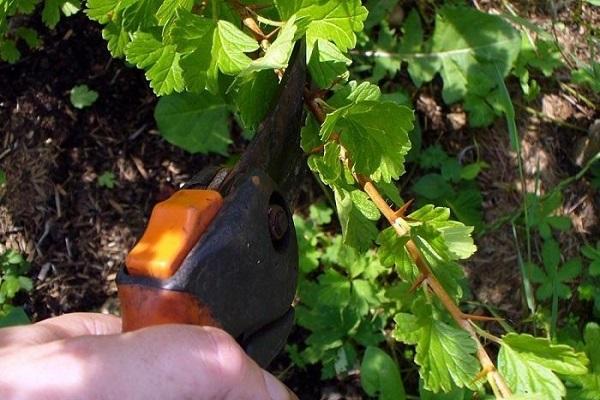
From the fourth year, pruning of bushes is carried out in order to eliminate thickening. As part of this procedure, weak and dry shoots are removed. Old shoots are pruned from bushes that have reached the age of 3 to 6 years.
Cold protection
The plant cannot be called whimsical, and even under a layer of snow, the roots of the gooseberry will be protected. Nevertheless, experienced gardeners recommend treating the culture with drugs before the onset of cold weather that will prevent it from getting sick and will help it bear fruit well when the time comes.
After the harvest is harvested and the foliage has fallen off, the plant debris is removed without fail. Next, the gooseberries are processed with Bordeaux liquid.Next, you need to dig up the soil near the trunk so that insects cannot hit the gooseberries. After the culture needs feeding.
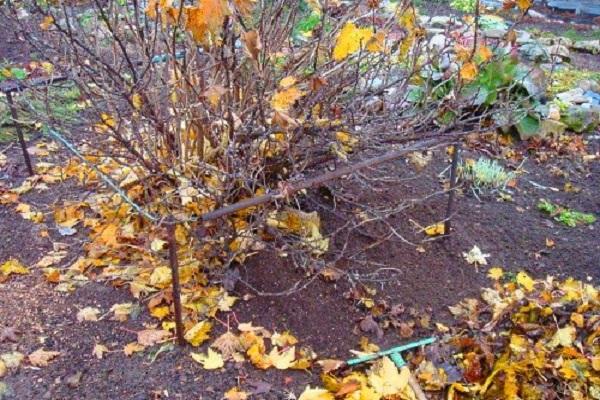
Disease and pest control methods
Gooseberries are sometimes attacked by moths, sawflies or aphids. To defend against such attacks, Karbofos, ash caste, or biological agents are used. Processing is carried out in the spring. If the need arises, spraying is carried out again after flowering begins.
Another plant problem is powdery mildew, which is identified by gray spots on the leaves. To combat this disease, a solution of baking soda and ferrous sulfate is suitable. Such processing is carried out as soon as a problem is detected.
